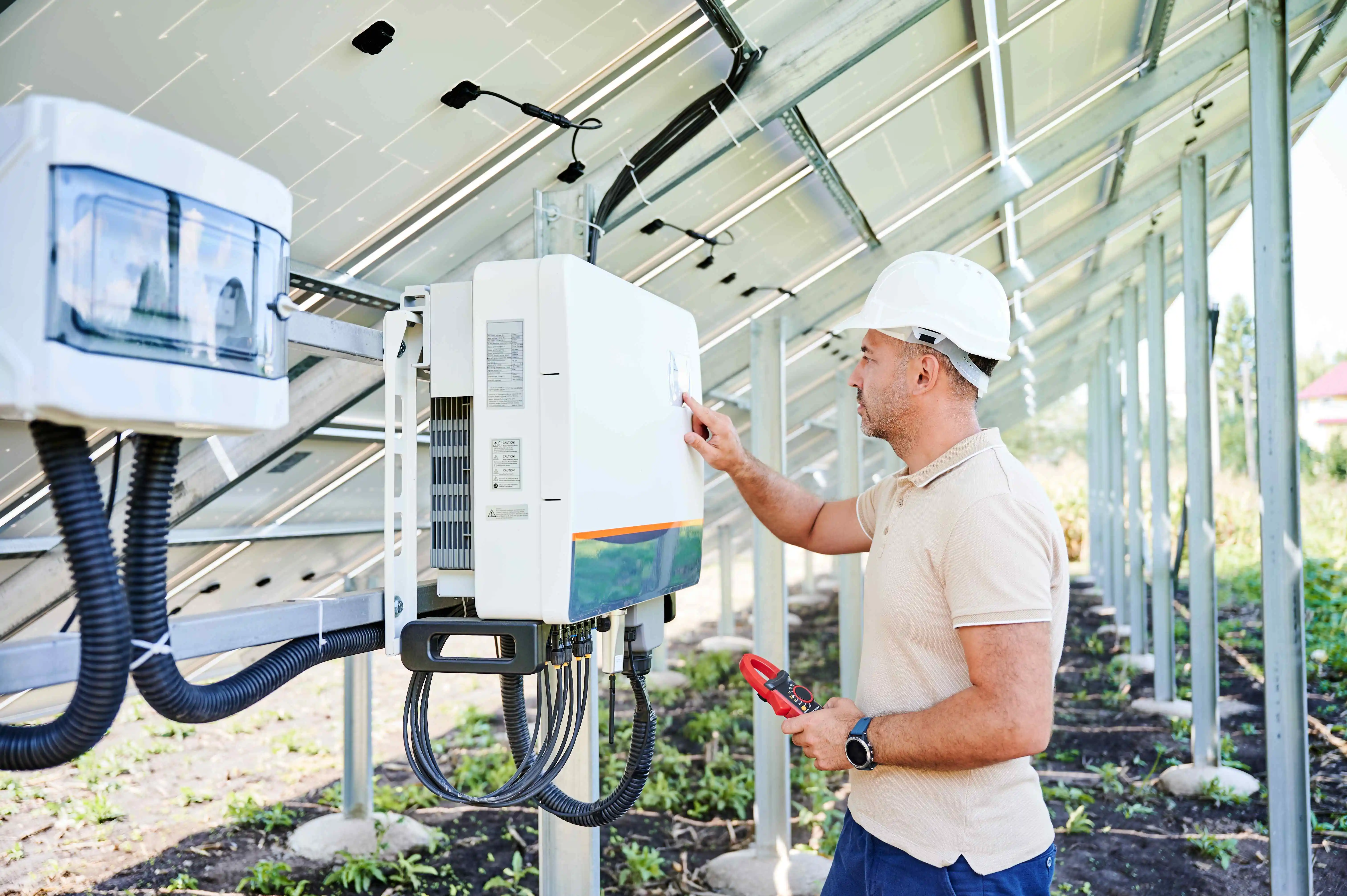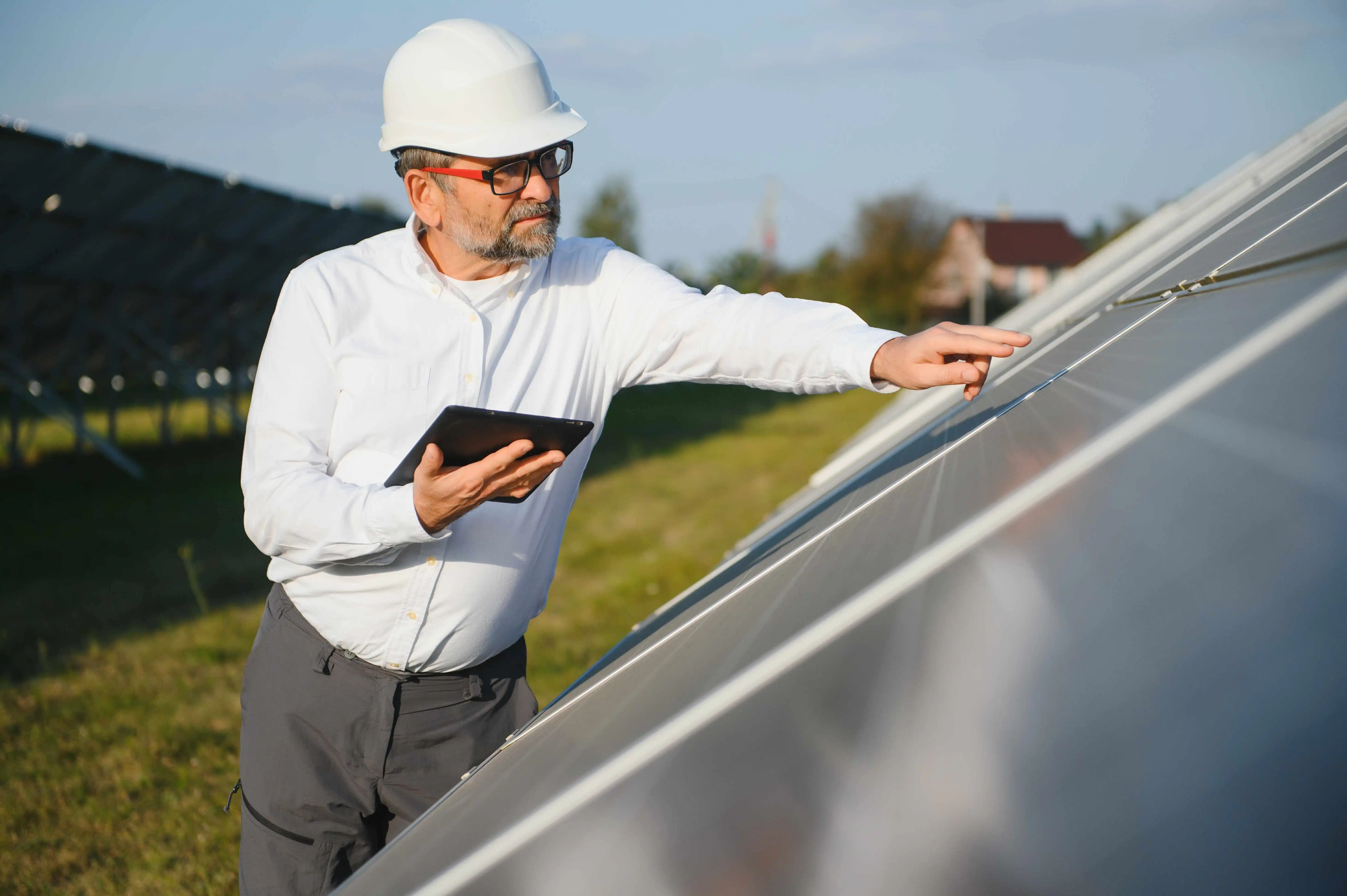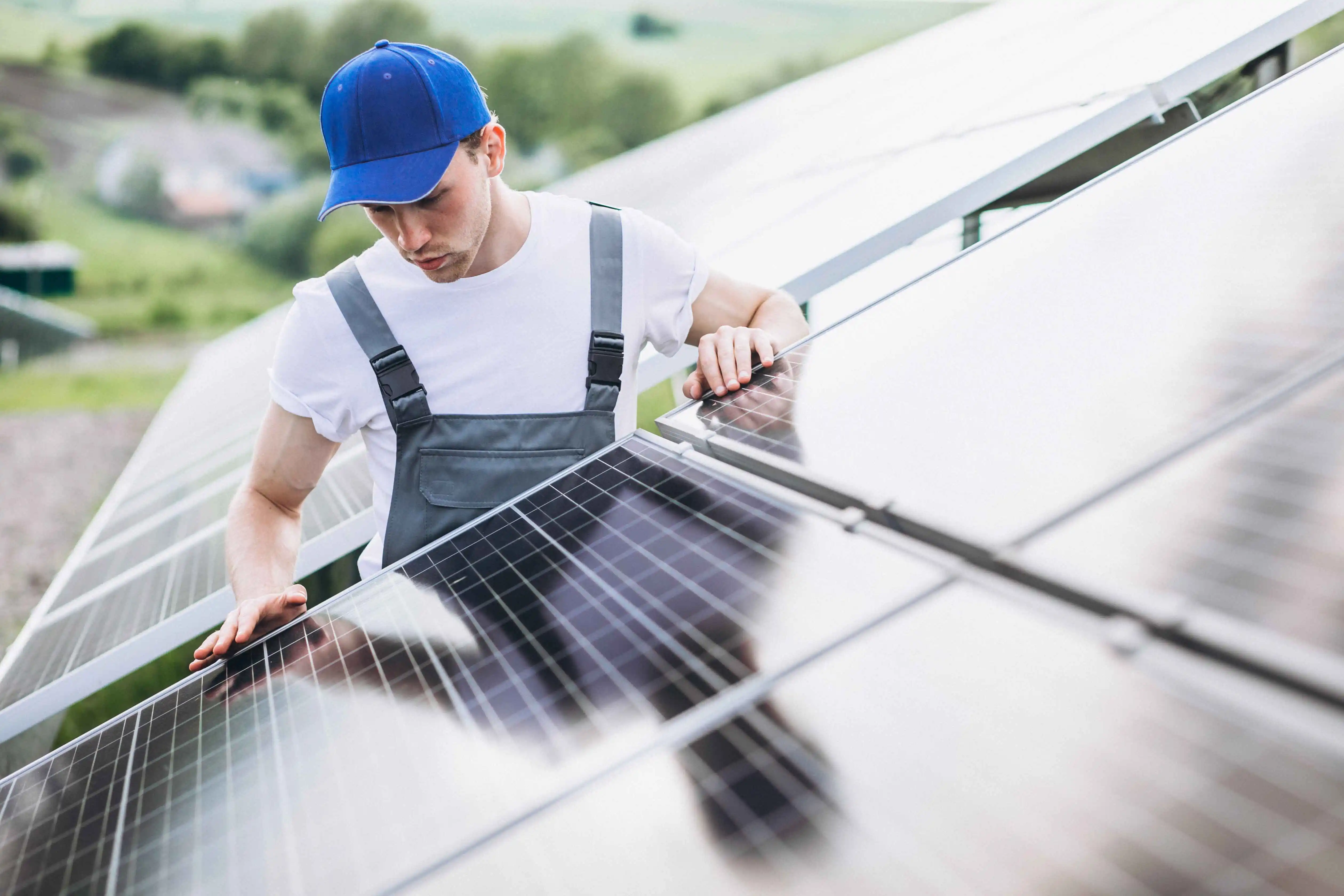At the heart of any solar power system lies a crucial component that orchestrates the seamless conversion of sunlight into usable electricity—the solar inverter. This intricate device plays the role of a conductor, orchestrating the harmonious dance of electrons as they transform direct current (DC) generated by solar panels into the alternating current (AC) required to power our homes and businesses.
As we embark on a journey to harness the full potential of solar energy, understanding the nuances of solar inverter maintenance becomes paramount. This essay, titled Solar Inverter Maintenance: Keeping It Running, aims to unravel the mysteries behind this pivotal component. From dissecting the fundamental workings of solar inverters to exploring advanced technologies and maintenance strategies, each section endeavors to empower readers with the knowledge needed to ensure their solar power systems operate at peak performance.
Join us as we navigate the intricate landscape of solar inverter maintenance, unveiling the key practices that not only keep this vital cog in motion but also contribute to the longevity and efficiency of the entire solar power ecosystem. Let the exploration begin, as we delve into the heart of solar power, ensuring it beats with sustained brilliance.
Unveiling the Heart of Your Solar Power System: The Solar Inverter
This unsung hero takes the energy harnessed by solar panels and transforms it into a usable form, a process vital for powering our homes and businesses. Understanding the intricacies of the solar inverter is paramount in the quest for optimal energy efficiency and longevity, making solar inverter maintenance a critical aspect of sustainable energy management.
The solar inverter acts as the conductor in the symphony of solar energy conversion. Its primary role is to convert the direct current (DC) generated by solar panels into alternating current (AC), the standard electricity format used in our daily lives. This transformation is akin to translating the language of the sun into one that powers our appliances, lights, and electronic devices. As the central processing unit of the solar power system, the solar inverter’s significance cannot be overstated.
To maintain the seamless operation of this technological heart, regular attention and care are essential. Routine solar inverter maintenance involve checking for signs of wear, monitoring performance indicators, and ensuring that the device’s software remains updated. By doing so, users not only maximize the efficiency of their solar power system but also contribute to its longevity, ensuring that the heart of the system continues to beat with sustained vigor. As we peer into the intricacies of the solar inverter, we uncover a world of components working in harmony. From semiconductor devices to power electronics, each element plays a crucial role in the conversion process. Recognizing the complexity within the solar inverter is the first step in developing a comprehensive maintenance strategy, one that ensures its reliable operation for years to come.
In the upcoming sections, we will delve deeper into the dance of electrons orchestrated by the solar inverter, exploring the signs that may indicate potential issues and the diagnostic prowess required to address them. Join us in unraveling the layers of this technological masterpiece as we uncover the essential practices of solar inverter maintenance, ensuring the heartbeat of your solar power system remains strong and steady.
How Solar Inverters Work?
In the intricate ballet of solar energy conversion, the solar inverter takes center stage, orchestrating the graceful dance of electrons. Understanding how solar inverters work unveils the magic behind turning sunlight into a usable form of energy. At the heart of this performance lies a profound symbiosis between technology and nature.
Solar inverters act as maestros, conducting the energy symphony with precision. When sunlight strikes solar panels, it generates direct current (DC), a flow of electrons in one direction. The solar inverter steps onto the stage, performing a transformative feat by converting DC into alternating current (AC). This conversion is vital because the electricity we use in our homes and businesses predominantly operates in AC format.
As electrons pirouette through the solar inverter, the seamless conversion ensures a harmonious transition from sunlight to power. This intricate dance guarantees that the energy harnessed from the sun becomes compatible with our electrical systems, empowering us to utilize clean, sustainable power in our daily lives. To maintain this dance of electrons at its peak, diligent solar inverter maintenance becomes the choreographer’s guide, ensuring every move is executed flawlessly.
A Symbiotic Connection with Solar Panels
The journey from sunlight to power is not a solitary endeavor but a symbiotic connection between solar inverters and panels. Solar panels, like eager performers on a stage, capture sunlight and generate DC, laying the foundation for the solar inverter’s transformative role. This symbiosis defines the efficiency and efficacy of the entire solar power system.
Solar panels and inverters form a dynamic duo, each relying on the other’s strengths. While solar panels harvest sunlight and generate a continuous flow of electrons, the solar inverter steps in to mold this energy into a usable form. The effectiveness of this partnership hinges on regular solar inverter maintenance, ensuring that the rhythm between the two remains uninterrupted.
As we delve into the synergy between solar panels and inverters, we uncover the intricacies of this symbiotic connection. Their collaboration not only powers our homes but also contributes to a sustainable future. Join us in the upcoming sections as we explore signs of solar inverter issues and diagnostic techniques, unraveling the layers of this intricate dance that fuels the heartbeat of your solar power system.

Recognizing Signs of Solar Inverter Issues
Silent sentinels of sustainable energy, solar inverters operate quietly behind the scenes, ensuring the seamless conversion of sunlight into power. However, amidst the tranquility, subtle signs may emerge, signaling potential issues within the solar inverter. Recognizing these signs becomes paramount in maintaining the efficiency and longevity of your solar power system.
The Eloquent Silence
The first clue to potential solar inverter issues lies in unexpected silence. Normally humming with the rhythmic flow of electrons, a silent solar inverter may indicate a disruption in its operation. During regular solar inverter maintenance, pay attention to any unexplained periods of quietude.
Warning Lights
Solar inverters often communicate issues through the language of lights. A sudden illumination of warning lights can be the inverter’s Morse code, signaling an anomaly in its functionality. Understanding the meaning behind these signals is crucial in deciphering potential issues. Are you fluent in the Morse code of solar inverters?
The Unseen Fluctuations
While solar panels harvest sunlight consistently, the solar inverter transforms this energy into a usable form. Any unexplained fluctuations in energy output may indicate underlying issues within the inverter. Regular monitoring and scrutinizing energy production patterns during solar inverter maintenance can reveal these subtle anomalies. Have you noticed any unseen fluctuations in your solar power system’s energy output?
Navigating the subtleties of solar inverter issues requires a keen eye and an understanding of the language these devices speak. In the following sections, we will delve into diagnostic prowess, exploring how to assess solar inverter performance and address potential concerns. Join Al Sabah to unravels the layers of silence, lights, and energy fluctuations, deciphering the messages your solar inverter conveys and ensuring its power remains unwavering.
How to Clean the Solar Inverter: A Maintenance Guide
Cleaning the solar inverter may not be as intuitive as maintaining other components, but it plays a crucial role in ensuring its optimal performance and longevity. As part of comprehensive solar inverter maintenance, periodic cleaning becomes a proactive measure to prevent potential issues and maintain the efficiency of your solar power system.
Regular cleaning routines often focus on solar panels, but neglecting the solar inverter can lead to accumulations of dust and debris, compromising its functionality. Here’s a step-by-step guide on how to clean the solar inverter effectively.
1. Power Down the System
Before initiating the cleaning process, ensure the solar power system is powered down. This precautionary step safeguards against potential electrical hazards during cleaning.
2. Dust and Debris Removal
Gently remove surface-level dust and debris using a soft brush or cloth. Pay attention to vents and openings, areas prone to accumulation that can impede proper ventilation.
3. Compressed Air for Interior Cleaning
For more intricate cleaning, use compressed air to remove dust from the interior components of the solar inverter. This ensures a thorough cleaning without direct contact.
4. Check for Moisture
Inspect the inverter for any signs of moisture, which can be detrimental to its functionality. If moisture is detected, take appropriate measures to address the issue and consult a professional if needed.
5. Solar Panel Cleaning Connection
Acknowledge the symbiotic relationship between solar panels and inverters. While cleaning the inverter, consider checking the cleanliness of solar panels as well. A well-maintained solar panel system contributes to the overall efficiency of the entire setup.
By incorporating solar panel cleaning into your regular maintain routine, you enhance the resilience of your solar power system. This proactive approach not only safeguards against potential issues but also contributes to the system’s prolonged efficiency. In the subsequent sections, we will delve into more advanced maintenance practices, exploring diagnostic strategies and the role of firmware upgrades in ensuring the sustained brilliance of your solar inverter.

Integrating Battery Storage with Solar Inverters
In the ever-evolving landscape of sustainable energy, the integration of battery storage with solar inverters marks a groundbreaking advancement. This synergy not only enhances the reliability of solar power systems but also opens new dimensions of energy independence and efficiency. As part of comprehensive solar inverter maintenance, understanding the nuances of this integration becomes pivotal. The integration of battery storage with solar inverters empowers users to go beyond the conventional grid limitations. Energy generated by solar panels can be stored in batteries, allowing homeowners and businesses to tap into this reserve during periods of low sunlight or grid outages. This level of autonomy transforms solar power systems into reliable sources of energy even when the sun sets.
Battery storage acts as a buffer, mitigating the fluctuations in energy production inherent in solar power systems. During periods of peak sunlight, excess energy can be stored in batteries for later use, evening out the energy supply and demand curve. This not only ensures consistent power availability but also contributes to more efficient utilization of the generated energy.
Al Sabah’s Proactive Tips
To optimize the integration of battery storage with solar inverters, Al Sabah recommends proactive solar inverter maintenance practices. Regularly checking the compatibility and performance of the integrated battery system ensures a seamless operation. Our expertise extends beyond installation, offering valuable insights into maintaining the harmony between solar inverters and battery storage for sustained efficiency.
The marriage of battery storage and solar inverters also enhances the overall energy efficiency of the system. By strategically storing excess energy and releasing it when needed, users can reduce reliance on the grid during peak demand hours, potentially lowering electricity costs. This dual functionality transforms solar power systems into comprehensive solutions for both economic and environmental sustainability.
In the following sections, we will delve deeper into Al Sabah’s recommendations for optimizing the integration of battery storage with solar inverters. These insights will not only guide users in harnessing the full potential of their solar power systems but also contribute to a more resilient and sustainable energy future.





